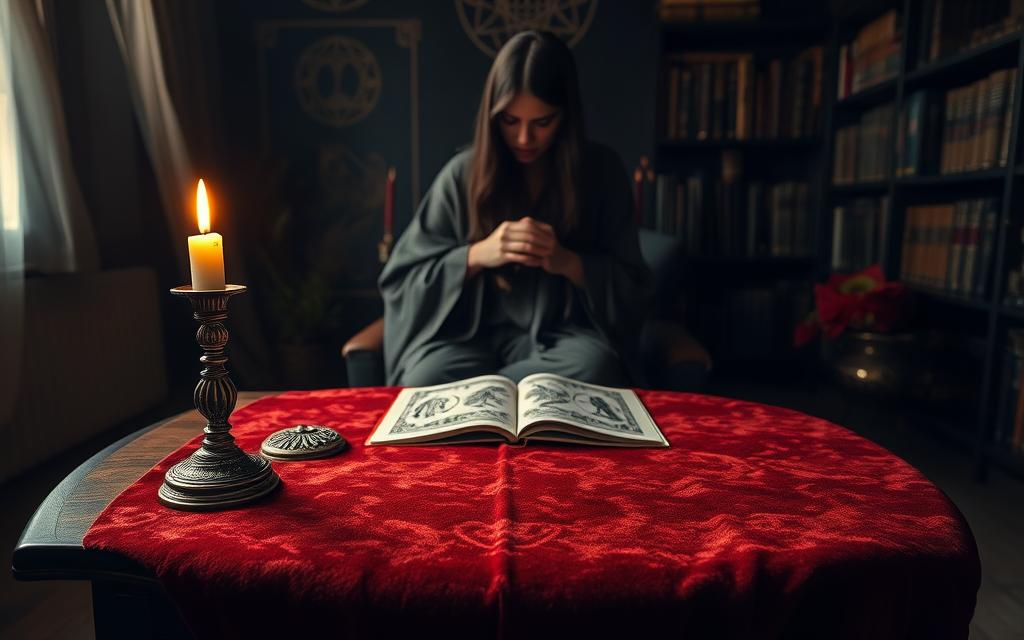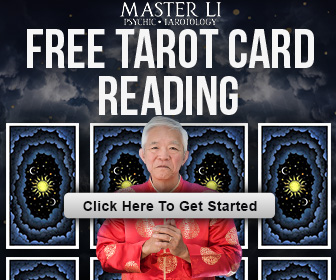Discover the world of tarot reading for beginners and unlock the secrets to personal growth and self-awareness. Tarot reading is an ancient practice that offers a profound way to gain insight into one’s life, helping individuals navigate through challenges and make informed decisions about their future.
By learning tarot reading, you can develop a deeper understanding of yourself and the world around you. This comprehensive guide will walk you through the basics of tarot reading, providing you with the tools and knowledge needed to start your journey. For a more in-depth exploration, you can learn how to create your own tarot, allowing you to tailor your readings to specific questions and areas of your life.
Table of Contents
The Fundamentals of Tarot Cards
For those new to tarot, understanding the deck’s structure and card meanings is the first step. Tarot cards are a tool used for self-reflection and gaining insight into one’s life. The deck is divided into two main categories: Major Arcana and Minor Arcana.
Understanding Tarot Deck Structure
A standard tarot deck consists of 78 cards. The structure includes 22 Major Arcana cards and 56 Minor Arcana cards. The Minor Arcana is further divided into four suits, similar to a regular playing card deck.
Major and Minor Arcana Explained
The Major Arcana cards represent significant life events, themes, and archetypes. The Minor Arcana cards reflect everyday situations and challenges. Understanding the difference between these two categories is crucial for interpreting tarot readings.
Choosing Your First Tarot Deck
When selecting a tarot deck, consider the artwork and symbolism. Some decks, like the Rider-Waite deck, are popular among beginners due to their clear imagery. You can explore different tarot deck types to find one that resonates with you.
| Deck Type | Description | Best For |
|---|---|---|
| Rider-Waite | Classic deck with detailed illustrations | Beginners |
| Traditional | Simple, straightforward imagery | Those who prefer minimalism |
| Thematic | Decks with specific themes (e.g., fantasy, nature) | Those who connect with the theme |
As you begin your tarot journey, understanding the tarot card meanings will enhance your ability to interpret readings. Start with the basics, and you’ll be conducting insightful tarot readings in no time.
Preparing for Your Tarot Reading Session
A successful tarot reading begins with preparation, setting the stage for a profound and insightful experience. To achieve this, it’s essential to focus on three key aspects: creating a sacred space, cleansing and connecting with your tarot deck, and setting clear intentions for your reading.
Creating a Sacred Space
Creating a sacred space is about more than just physical environment; it’s about cultivating an atmosphere conducive to introspection and connection with the tarot cards. Choose a quiet, comfortable spot where you can sit without distractions. You may also want to incorporate elements like candles, incense, or soft music to enhance the ambiance and help you relax.
Cleansing and Connecting with Your Deck
Cleansing your tarot deck is a crucial step in preparing for a reading. This process helps to remove any negative energies that may have accumulated, ensuring a fresh start. You can cleanse your deck by shuffling it thoroughly, placing it under a full moon, or using a cleansing crystal. After cleansing, take a moment to connect with your deck by holding it and focusing your intentions.
Setting Clear Intentions
Setting clear intentions is vital for a meaningful tarot reading. Before you begin, define what you hope to achieve or understand from the reading. This could be seeking guidance on a specific issue or gaining a broader perspective on your current situation. By focusing your intentions, you create a clear framework for your reading, allowing you to interpret the cards more effectively.
How to Do a Tarot Reading for Yourself: Step-by-Step Guide
Embarking on a tarot reading journey for personal insight requires a step-by-step approach. To effectively do a tarot reading for yourself, you need to understand the process from formulating the right questions to interpreting the cards. This guide will walk you through each step, helping you unlock the full potential of tarot readings for personal growth and self-discovery.
Formulating Effective Questions
Formulating the right questions is the foundation of a meaningful tarot reading. Your questions should be clear, concise, and open-ended to allow for deeper insights. Instead of asking yes/no questions, consider inquiries that explore the circumstances and outcomes of a situation.
For example, “What steps can I take to improve my current situation?” or “What are the underlying factors influencing my decision?” Such questions encourage a more nuanced understanding of the tarot’s message.
Shuffling Techniques and Card Selection
Shuffling the tarot deck is not just a mechanical action; it’s a way to connect with the cards and infuse your energy into the reading. Various shuffling techniques can be used, such as the ‘riffle shuffle,’ ‘overhand shuffle,’ or simply mixing the cards on a flat surface.
The key is to shuffle until you feel it’s time to stop, often indicated by a sense of calm or a specific intuition. Once shuffled, you can select cards using a method that feels intuitive to you, such as cutting the deck at a random point or drawing from the top.
Recording Your Readings for Future Reference
Recording your tarot readings is crucial for tracking your progress and gaining deeper insights over time. Write down the question you asked, the cards drawn, and your interpretation of the reading.
Reflecting on past readings can help you identify patterns, understand how your questions and concerns evolve, and see how the insights from the tarot have guided you. Consider keeping a tarot journal or using a digital note-taking app to store your readings.
By following these steps and practicing regularly, you’ll become more comfortable and confident in doing tarot readings for yourself, unlocking a powerful tool for self-discovery and personal growth.
Essential Tarot Spreads for Beginners
For beginners, mastering simple yet effective tarot spreads is an essential step towards becoming proficient in tarot reading. Tarot spreads provide a framework for interpreting the cards, allowing you to gain deeper insights into specific questions or areas of your life. As you start your tarot journey, familiarizing yourself with a variety of spreads can enhance your understanding and connection with the tarot deck.
The One-Card Draw for Daily Guidance
The one-card draw is a straightforward and powerful spread for gaining daily guidance. By drawing a single card, you can reflect on its meaning and how it relates to your current situation or question. This spread is ideal for daily inspiration or as a quick check-in with your subconscious. As noted by experts, “A daily tarot draw can become a meditative practice, helping you tune into your inner wisdom.” Learn more about tarot basics.
Three-Card Past-Present-Future Spread
The three-card past-present-future spread offers a more in-depth look at your situation by examining the influences of the past, the current state, and the potential future outcome. This spread is particularly useful for understanding how past actions are influencing your present and how current decisions may shape your future. As you practice this spread, you’ll become more adept at interpreting tarot cards in context. For more complex questions, this spread provides a clear and structured narrative.
The Celtic Cross for Comprehensive Insights
The Celtic Cross spread is a classic and comprehensive tarot spread that provides detailed insights into a specific question or situation. It involves laying out multiple cards in a specific pattern, each representing different aspects such as the current situation, challenges, and future influences. While it may seem complex, it’s a valuable tool for gaining a deeper understanding of your tarot readings. For those looking to explore more spreads, exploring additional tarot spreads can further enhance your practice.
As you explore these essential tarot spreads, remember that practice is key. The more you work with the tarot, the more comfortable you’ll become with interpreting the cards and understanding their relevance to your life.
Developing Your Tarot Interpretation Skills
The art of tarot interpretation is a nuanced one, requiring a blend of knowledge, intuition, and practice. As you delve deeper into the world of tarot, understanding how to interpret the cards effectively becomes crucial for gaining meaningful insights into your life and the questions you seek answers to.
Understanding Card Symbolism and Imagery
Each tarot card is rich in symbolism, with imagery that speaks to different aspects of human experience. To interpret tarot cards, one must first understand the symbolism and imagery on the cards. For instance, the Major Arcana cards represent major life themes and transitions, while the Minor Arcana cards reflect everyday situations and emotions. Familiarizing yourself with the symbolism on each card is key to interpreting tarot cards accurately.
Reading Reversals and Challenging Cards
Not all cards appear in the upright position during a reading; some may appear reversed. Reversed cards can indicate a blockage or the opposite of the card’s usual meaning. Understanding how to read reversals is crucial for a nuanced interpretation. Additionally, some cards may have challenging or uncomfortable meanings. Learning to navigate these cards with compassion and understanding is part of developing your tarot interpretation skills.
Combining Card Meanings in Spreads
Tarot readings often involve drawing multiple cards in a specific spread. Combining the meanings of these cards to answer a question or understand a situation requires practice and a deep understanding of how the cards interact with each other. For example, a tarot reading might involve a three-card spread representing past, present, and future influences on a situation.
| Card Position | Card Meaning | Interpretation |
|---|---|---|
| Past Influence | The card representing the past influence | How past events are affecting the current situation |
| Present Situation | The card representing the current situation | The current state of affairs and its impact |
| Future Outcome | The card representing the future outcome | The potential outcome based on current trends |
Trusting Your Intuitive Insights
While knowledge of tarot card meanings is essential, intuitive tarot reading plays a significant role in interpretation. Trusting your intuition allows you to connect the dots between the card meanings and your personal situation, providing a more holistic understanding. As you practice, you’ll find that your intuition becomes a powerful tool in your tarot readings.
Developing your tarot interpretation skills is a journey that enhances your ability to gain insights and guidance from the tarot. By understanding card symbolism, learning to read reversals, combining card meanings, and trusting your intuition, you’ll become proficient in the art of tarot interpretation.
Conclusion: Embracing Your Personal Tarot Journey
As you conclude this introduction to tarot reading, you’re poised to embark on a transformative journey of self-discovery and personal growth. Tarot reading for personal growth offers a powerful tool to navigate life’s challenges, fostering a deeper understanding of yourself and the world around you.
By integrating tarot into your daily routine, you’ll cultivate a greater sense of self-awareness, allowing you to make more informed decisions and navigate life’s complexities with confidence. Your tarot journey is a personal and evolving process, one that invites you to explore the depths of your own intuition and inner wisdom.
As you continue on this path, remember that tarot reading is a skill that develops over time with practice and patience. Trust in your abilities, and allow the tarot to guide you toward a more authentic, empowered you. With each reading, you’ll deepen your understanding of the tarot and yourself, unlocking new insights and perspectives that enrich your life’s journey.


